Hot Water Dough, aka scalded dough, is used in China to make light and tender dumpling wrappers. However, this versatile method of making dough can also be used to make dumpling skins, paratha, matzo, and a variety of stuffed flatbreads. Amazing how a mixture of flour, water, and salt can lead to so many diverse and delicious things!
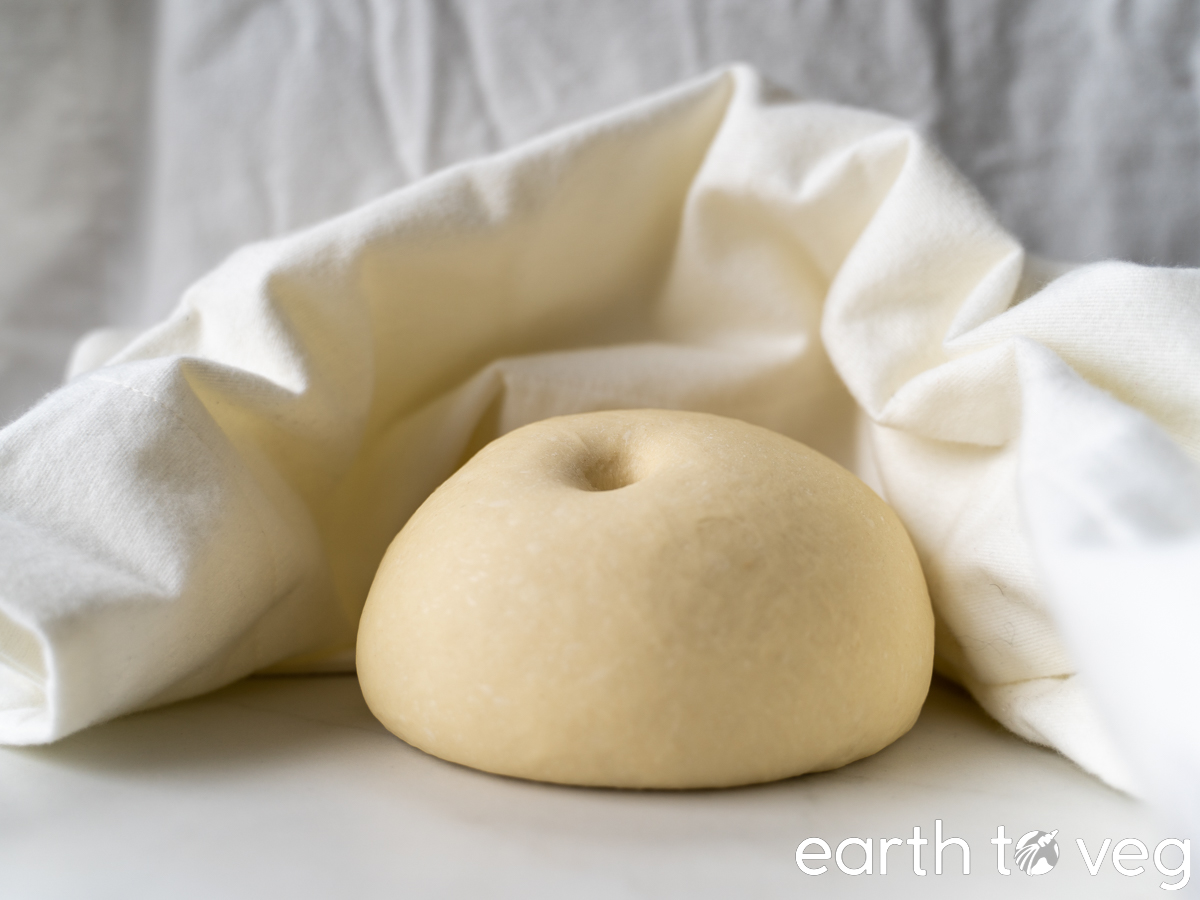
I’ve been experimenting with this hot water dough for a while and can say this is undoubtedly a foundational recipe. I’ve used it to make bendy tortillas, deliciously flaky scallion pancakes, soft and supple pierogi dough, and more.
Uses for Hot Water Dough
In Chinese cuisine, hot water dough is known as tang miantuan (烫面团), and is commonly used for steamed and pan-fried dumplings because of its tender, delicate texture. Whereas cold water dough, aka leng miantuan (冷面团) is preferred for boiled dumplings and wontons because it’s sturdier and holds up better in boiling water.
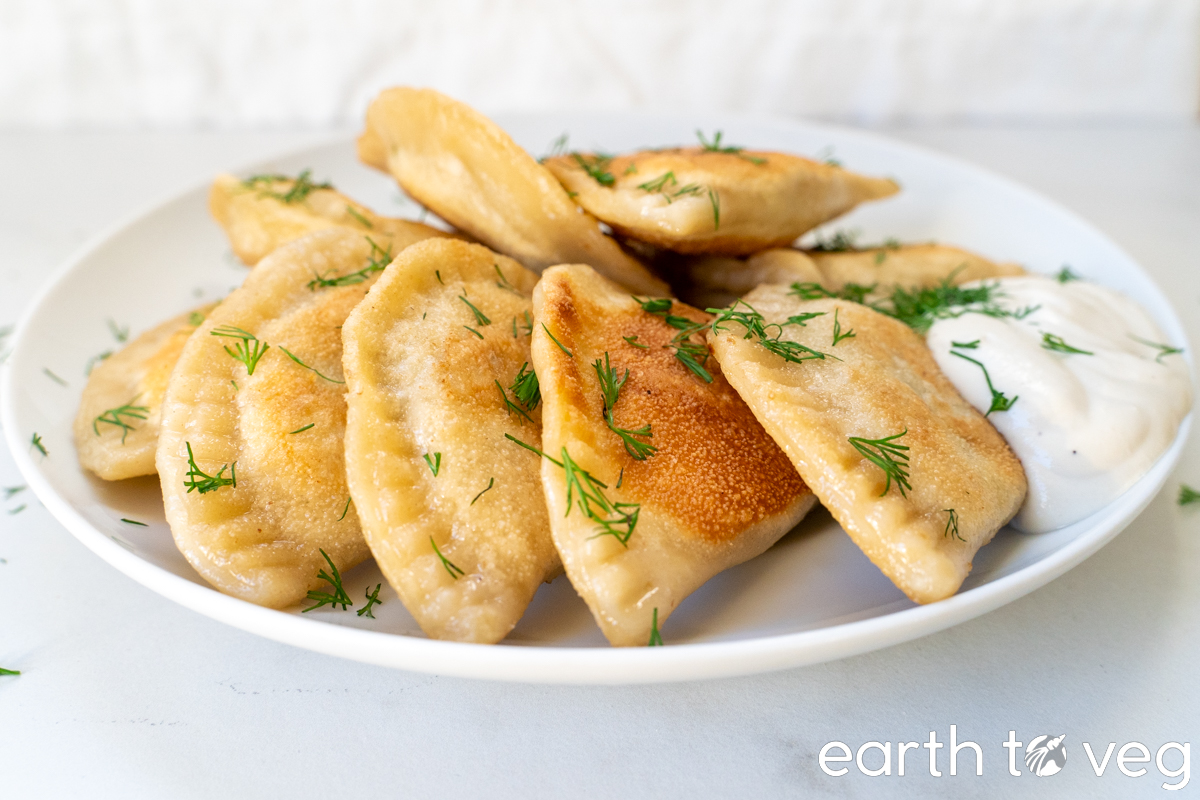
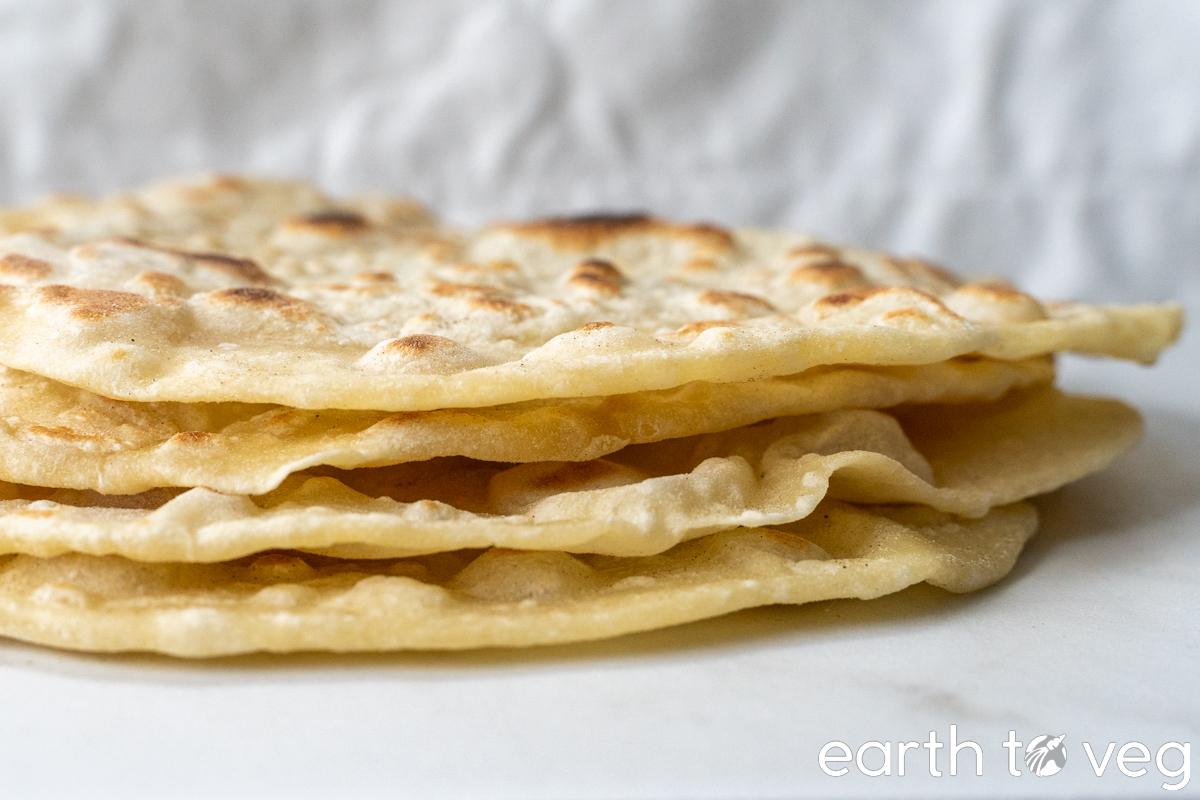
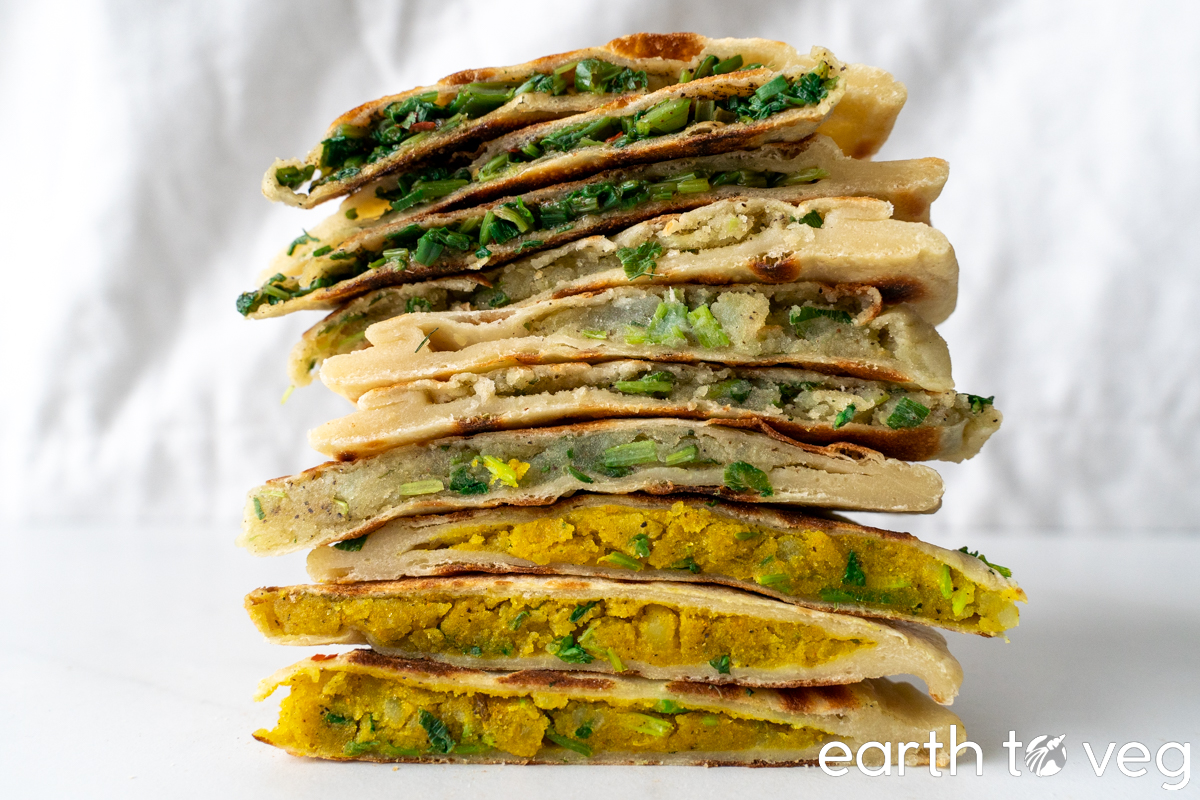
Besides Chinese dumplings (jiaozi), you can use hot water dough to make:
- All kinds of other stuffed dumplings, like Afghan ashak, Korean mandu, Japanese gyōza, Mongolian buuz, Polish uszka, Russian pelmeni, Central Asian manti, Eastern European pierogi or varenyky, Middle Eastern shish barak, and South Asian momo
- Bolani, a stuffed Afghan bread, resembling a turnover, with fillings like potato, pumpkin, and herbs
- Flammkuchen, a pizza-like open flatbread with toppings, invented in Alsace, France
- Flour tortilla, the thin and flexible Mexican flatbread used for burritos, tacos, quesadillas, and more
- Gözleme, a Turkish specialty similar to bolani, with different fillings such as spinach, cheese, and meat
- Laobing, chaobing, and shaobing, three varieties of Chinese pancakes that are either pan-fried or baked, and come with or without stuffing, often scattered with sesame seeds
- Scallion pancakes (cong you bing)
- Red bean pancakes (hongdou bing)
- Brown sugar pancakes (hongtang shaobing)
- Markook shrak, a large, paper-thin flatbread eaten throughout the Middle Yeast
- Matzo, a baked Jewish flatbread traditionally consumed during Passover, can be made either soft or crispy
- Paratha, a crispy laminated bread with layers and layers of oily dough, can be made plain or with a variety of fillings; similar to the Southeast Asian roti canai
- Piadina, a thin Italian skillet flatbread usually folded over toppings, a bit like a pita
- Podpłomyki, an ancient Slavic bread, traditionally cooked on stones over a bonfire, nowadays baked in the oven and eaten with jam
- Qistibi, a potato-filled turnover similar to bolani and gözleme, popular in the Volga region of Russia
- Roti canai, an ultra-flaky laminated flatbread from Southeast Asia, similar to paratha, usually dipped in curry
- Saj, similar to markook but cooked on a hot round griddle
- Shumai, a dim sum favourite, originally from China but popular in many other Asian countries; basically a flower-shaped type of steamed dumpling
- Torta de gazpacho, a Spanish flatbread with roots in ancient Iberia, traditionally served smothered in a hot stew
I will be releasing recipes for these and more later on throughout this blog.
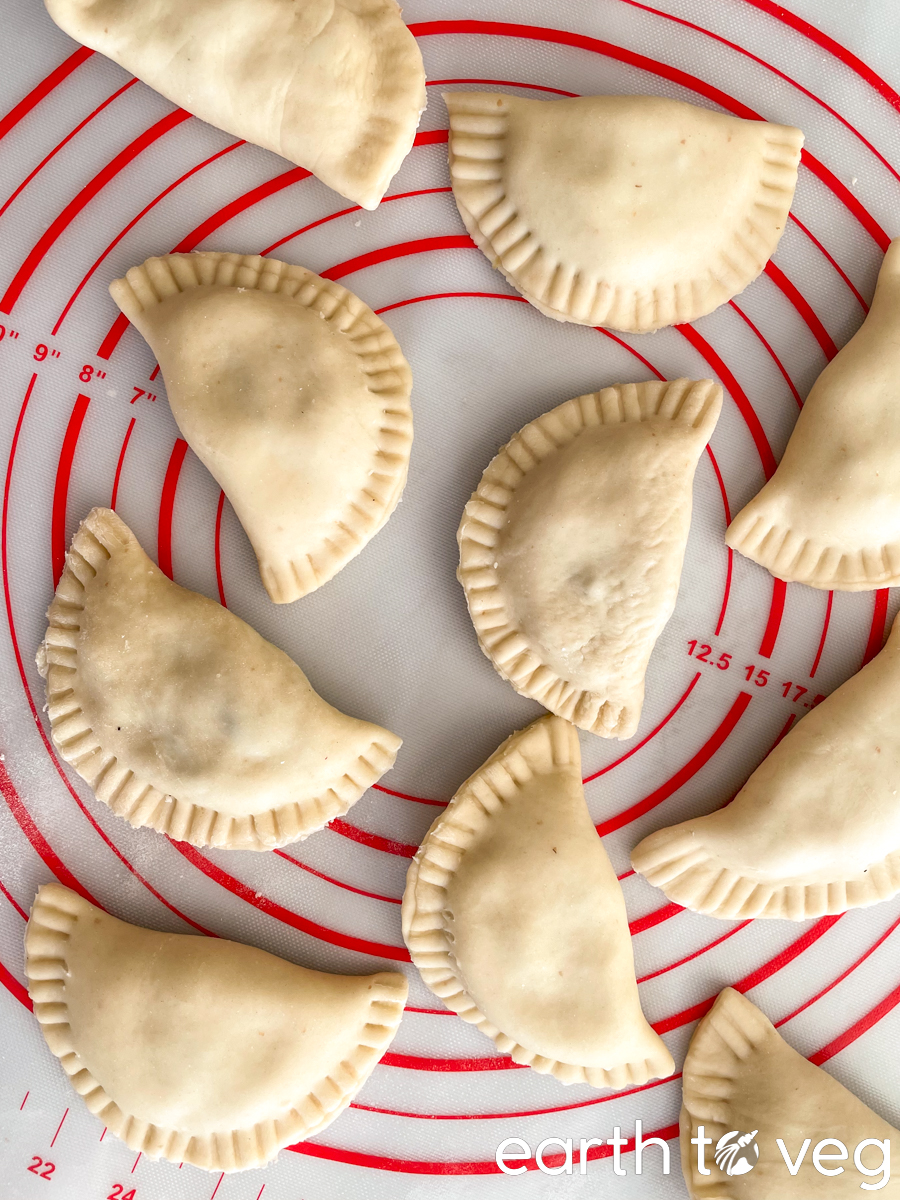
The Science of Scalded Flour
Scalding flour has two major effects on the dough:
- Breaks down and inhibits gluten formation: Hot water damages and partially denatures proteins such as gluten and gliadin in the flour. Because these damaged proteins cannot effectively form gluten networks, this reduces the strength of the dough. The resulting dough still has a bit of stretch, because there is still a small amount of gluten development, but it’s definitely not as chewy and elastic as a dough made with room temperature water. If you’ve ever tried rolling out dough only to have it shrink again when you let go, that’s because it has a tight, strong gluten network. This hot water dough will solve that problem. It’s much easier to roll your dough super thin if you make it with hot water.
- Gelatinizes starch: Besides protein, flour also contains lots of starch. Adding hot water turns that dry starch into a thick, gel-like substance that can absorb much more water than non-scalded starch. (It’s the same idea behind thickening a sauce with roux or cornstarch.) Gelatinized starch contributes to a softer, less stretchy dough. Also, some of the starch, which is made up of complex carbs, gets transformed into simple sugars as it gets cooked by the boiling water. The result is that scalded flour has a sweeter taste than non-scalded flour.
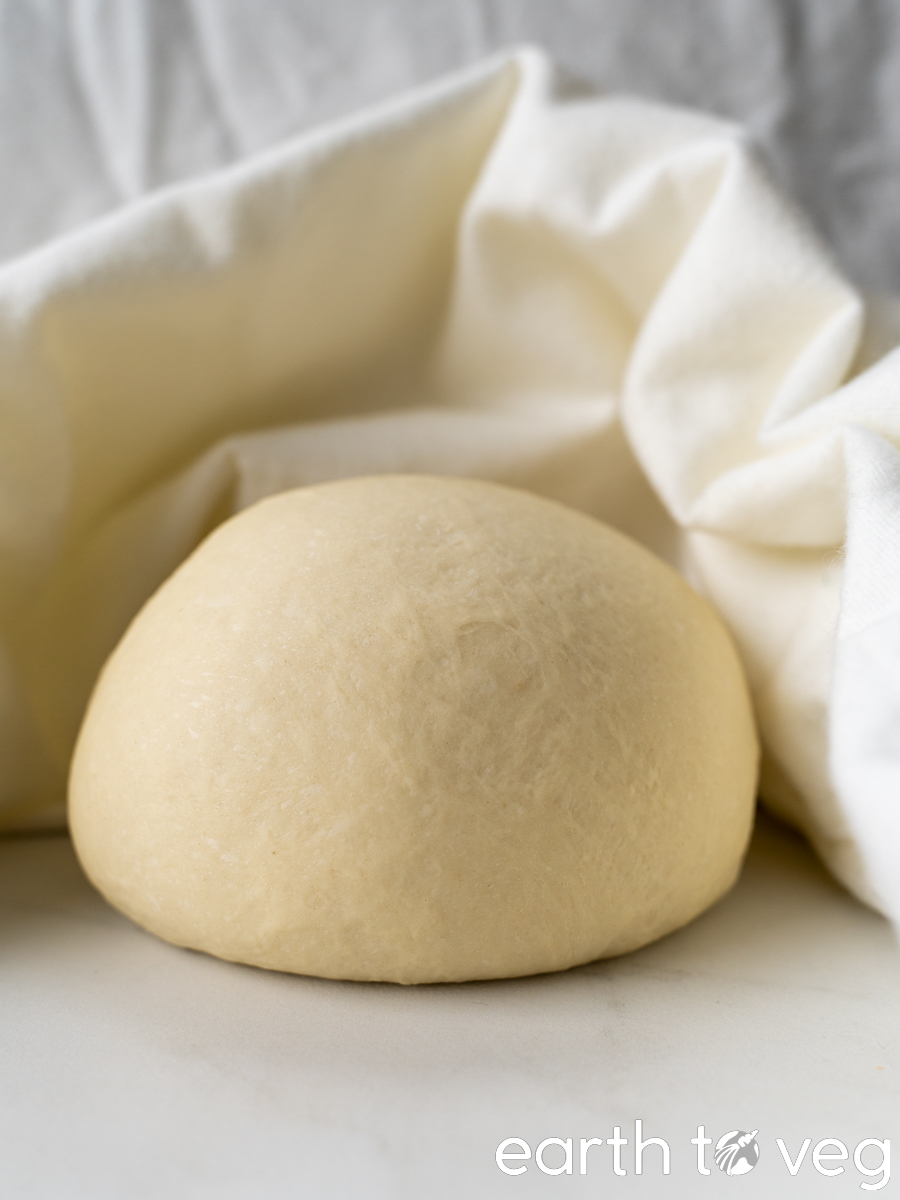
Hot Water Dough vs Tangzhong, Yudane, and Scalded Rye
The principle behind scalded flour in this hot water dough recipe shares similarities with:
Similar methods are used in other Baltic and Scandinavian countries as well (mostly with rye flour).
However, these techniques are used for bread-baking. They involve scalding only a portion of the total flour in the recipe (usually between 5–30%). You see, adding scalded dough in small amounts can improve the texture, flavour, and shelf life of bread, but if we were to make a bread with 100% scalded flour, it would turn out quite flat and gummy. The gluten and other proteins in the bread would be too damaged to hold up the structure of the bread.
By contrast, hot water dough is used for making things other than yeasted bread, such as unleavened flatbreads (tortilla, bolani, roti, paratha) and dough wrappers (dumplings, perogies, manti). For these foods, the structure of the dough is flat and the texture is tender, but not very elastic. The major difference is that the entirety of the flour in the recipe is scalded.
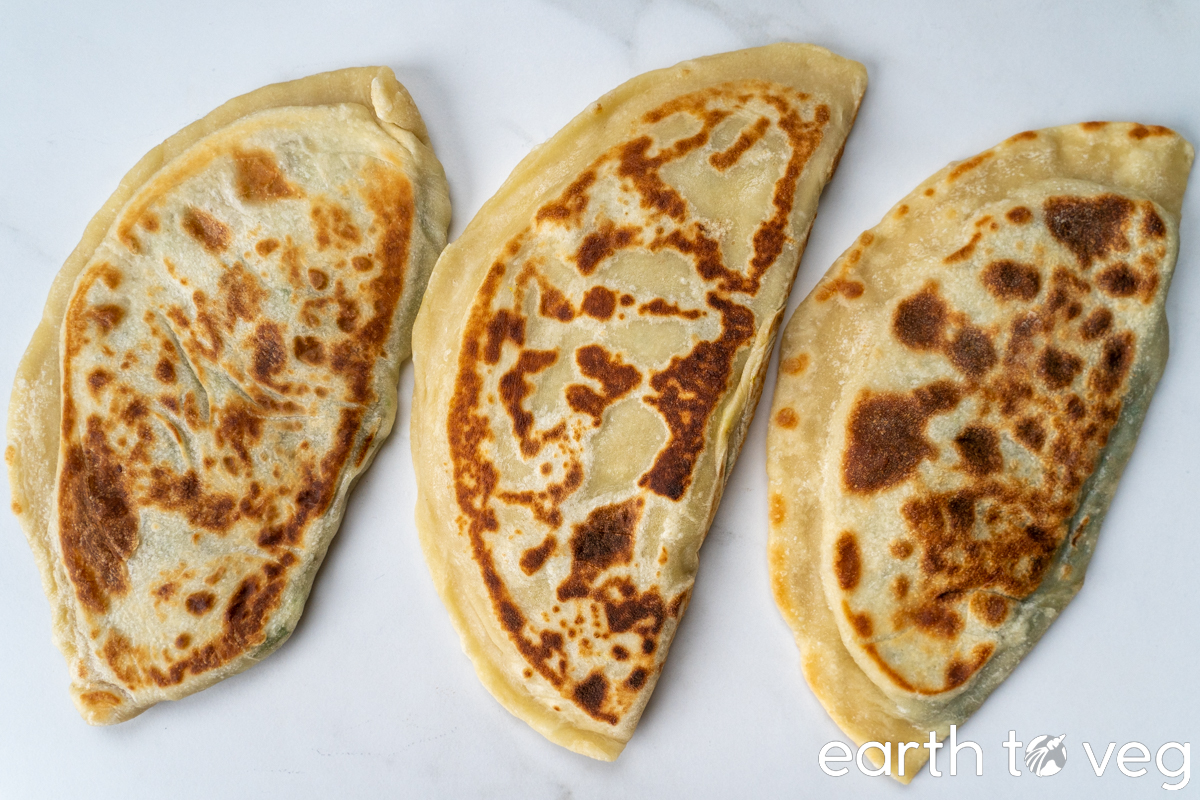
What You’ll Need
The requirements for making hot water dough are super simple. There are only three to four ingredients:
Start with Flour
Flour is obviously a must. Since the point of hot water dough is that you don’t want too much gluten development, all purpose flour works best.
- Pastry flour and cake flour, which contain lower protein than all purpose, are good choices for this recipe too.
- Bread flour contains higher gluten content, making for a more elastic dough, which kind of defeats the purpose of making this recipe with hot water. Not recommended.
- I have only used wheat flour in testing this recipe. I don’t know how gluten-free flours would behave since the magic of hot water dough depends on changing the interactions between the gluten and gliadin proteins found in wheat flour, as well as the specific properties of gelatinized wheat starch; other starches may behave unexpectedly. But you’re welcome to try with a gluten-free flour and let me know how it goes.
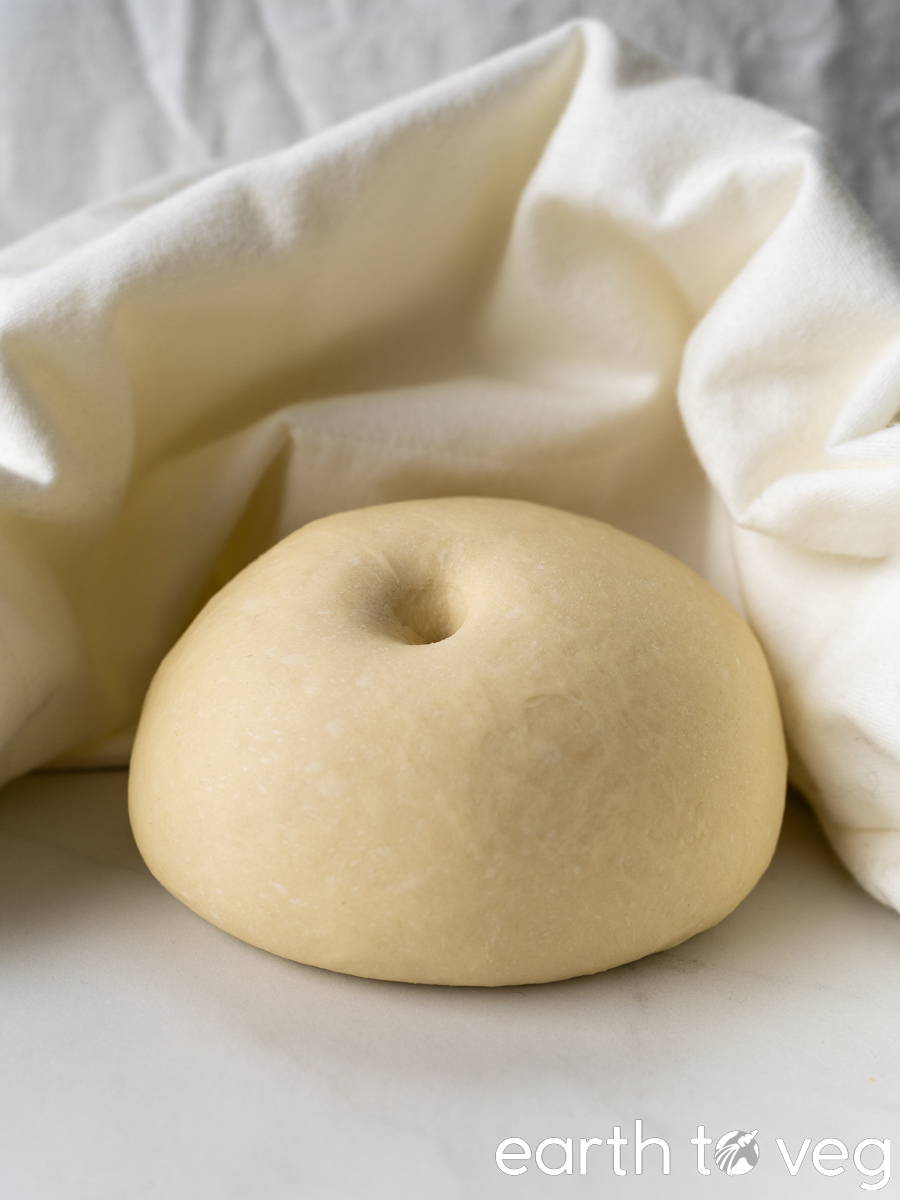
The Role of Salt
Salt is added to improve the flavour of the dough. When you’re eating a dumpling, you may be more interested in the filling than in the wrapper, but the wrapper is important too! Same with a tortilla or a flatbread: you may think it’s just a vehicle for delivering the toppings to your mouth, but the bread itself adds flavour too. I gave my dad a blind taste test of tortillas made with salted vs unsalted hot water dough, and he said the salted one tasted much better.
Advantages of Hot Water
Hot water is the key to this recipe; after all, it’s in the name. I already discussed the science behind using hot water above, but it boils down (ha pun intended) to two advantages:
- A dough that’s easier to roll: Ever had the problem of dough bouncing back as you try to roll it out thin? That’s because the proteins in the flour have arranged themselves into a strong network with high elasticity. Great for springy bread dough, not so good for paper-thin dumpling skins or highly-laminated roti canai. Using hot water inhibits the formation of this elastic gluten network, creating a pliant, malleable dough that’s less frustrating to work with.
- A finished product with more tender texture: Whether you’re making perogies or scallion pancakes, you don’t want to end up with excessive chewiness. Unlike bread, which is all about the chew, you don’t want to be gnashing on a leathery paratha or squishing your burrito filling out the bottom as you wrestle with a particularly resilient tortilla. Again, hot water dough has lower elasticity than a regular dough, making the end result light and tender.
Oil Is Optional
Whether you add oil or not depends on what you want to make with your dough.
- For example, dumpling skins are made without any oil. On the other hand, perogy wrappers do contain oil.
- Some flatbreads, like tortilla, piadina, and roti canai, have oil kneaded in with the dough.
- Others, like markouk, matzo, and torta de gazpacho are made with lean doughs, ie. they don’t use any oil at all.
- Still others, like scallion pancake and paratha, contain no fat in the dough itself, but are laminated with plenty of oil to create flaky layers.
I include instructions for making this recipe with or without the oil (“enriched” vs “lean” versions). Basically, if you are adding oil, mix it together briefly with the flour and water first, then add the hot water. Besides that extra step, everything else is the same.
Vegetable oil is the all purpose default for this recipe, and it will serve you well no matter what you end up making with the dough. However, for some recipes, it may make sense to swap it out for another fat. For example, if making piadina, an Italian flatbread, you can use olive oil. If making pelmeni, pierogi, or varenyky, you can use vegan butter or margarine. You get the gist.
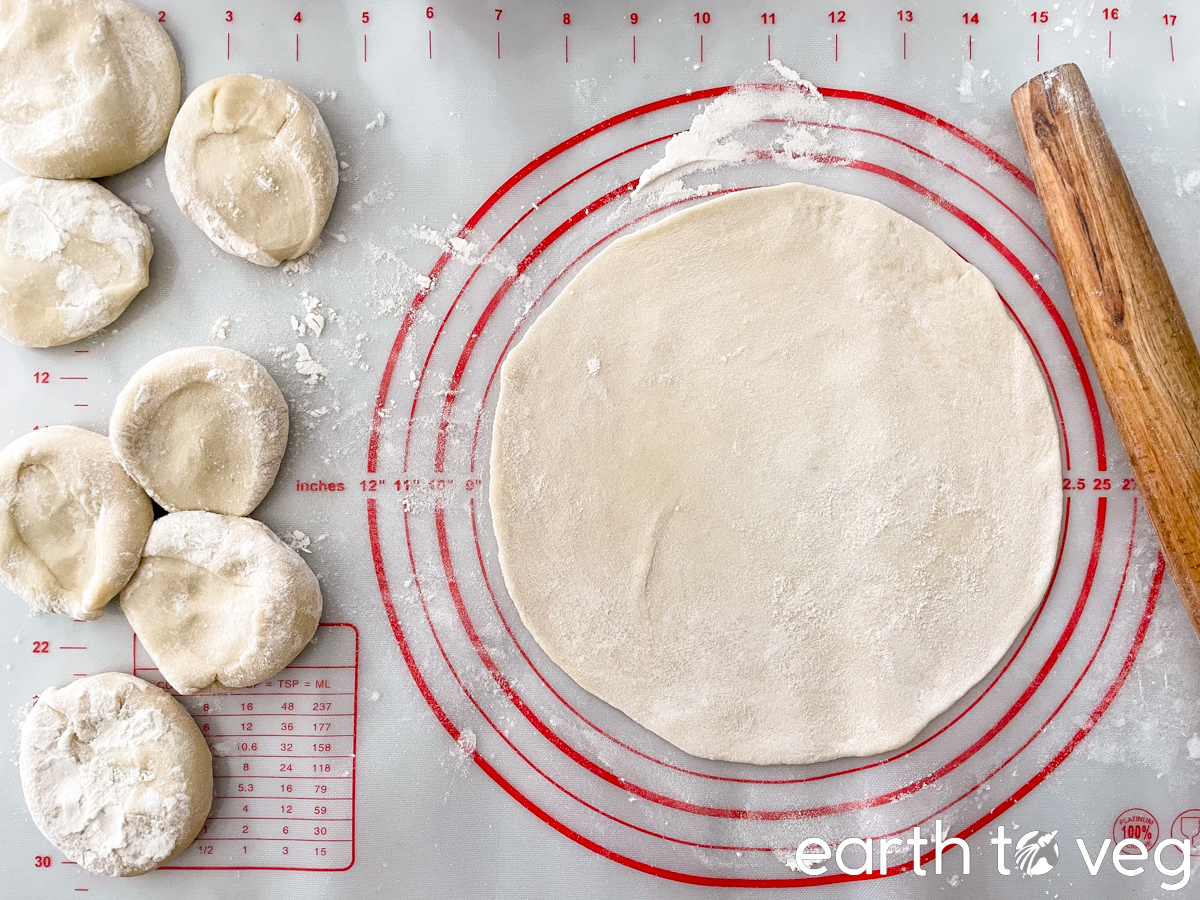
Step-by-Step Process
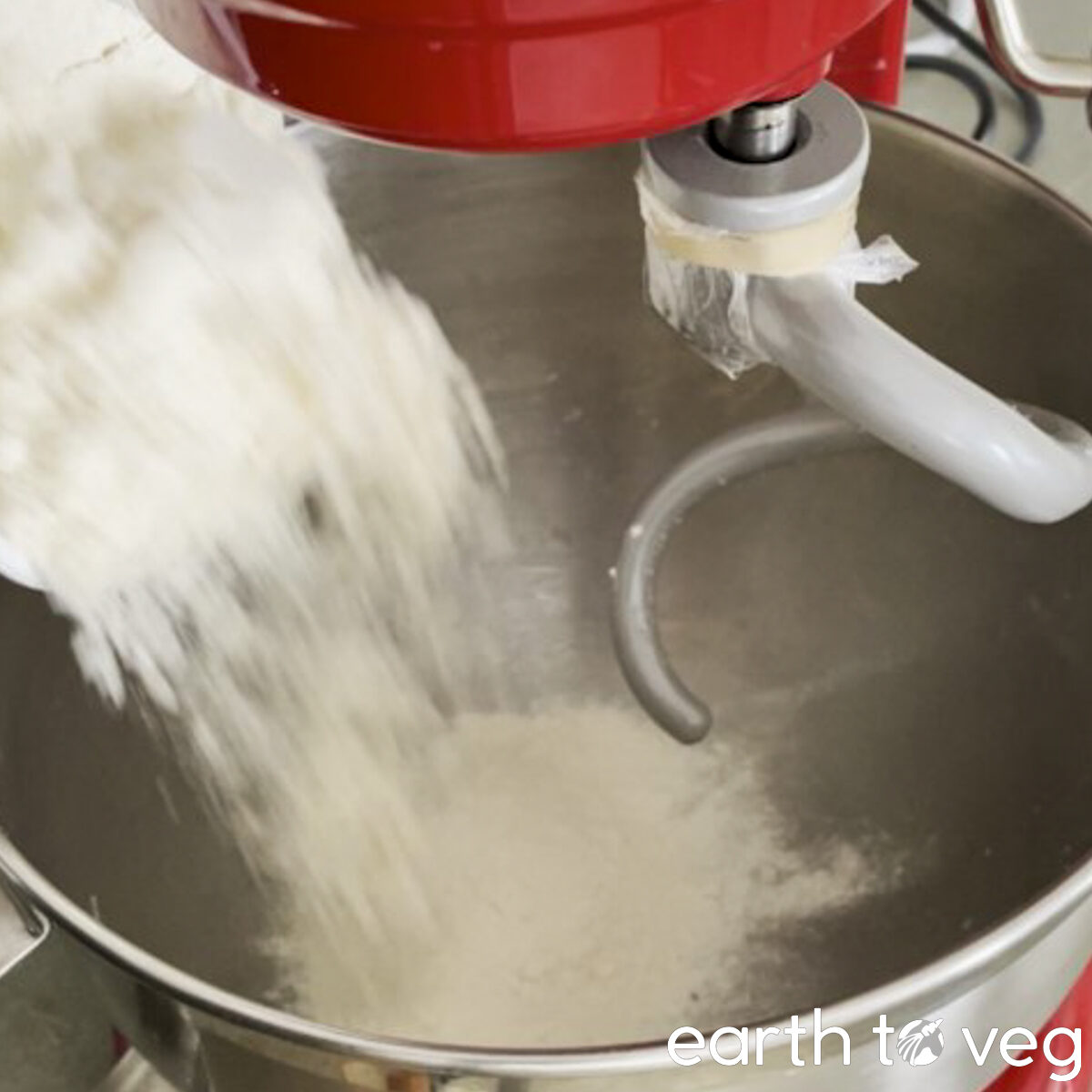
Step 1: First, bring some water to a boil in a kettle. Meanwhile, pour flour into your mixing bowl.
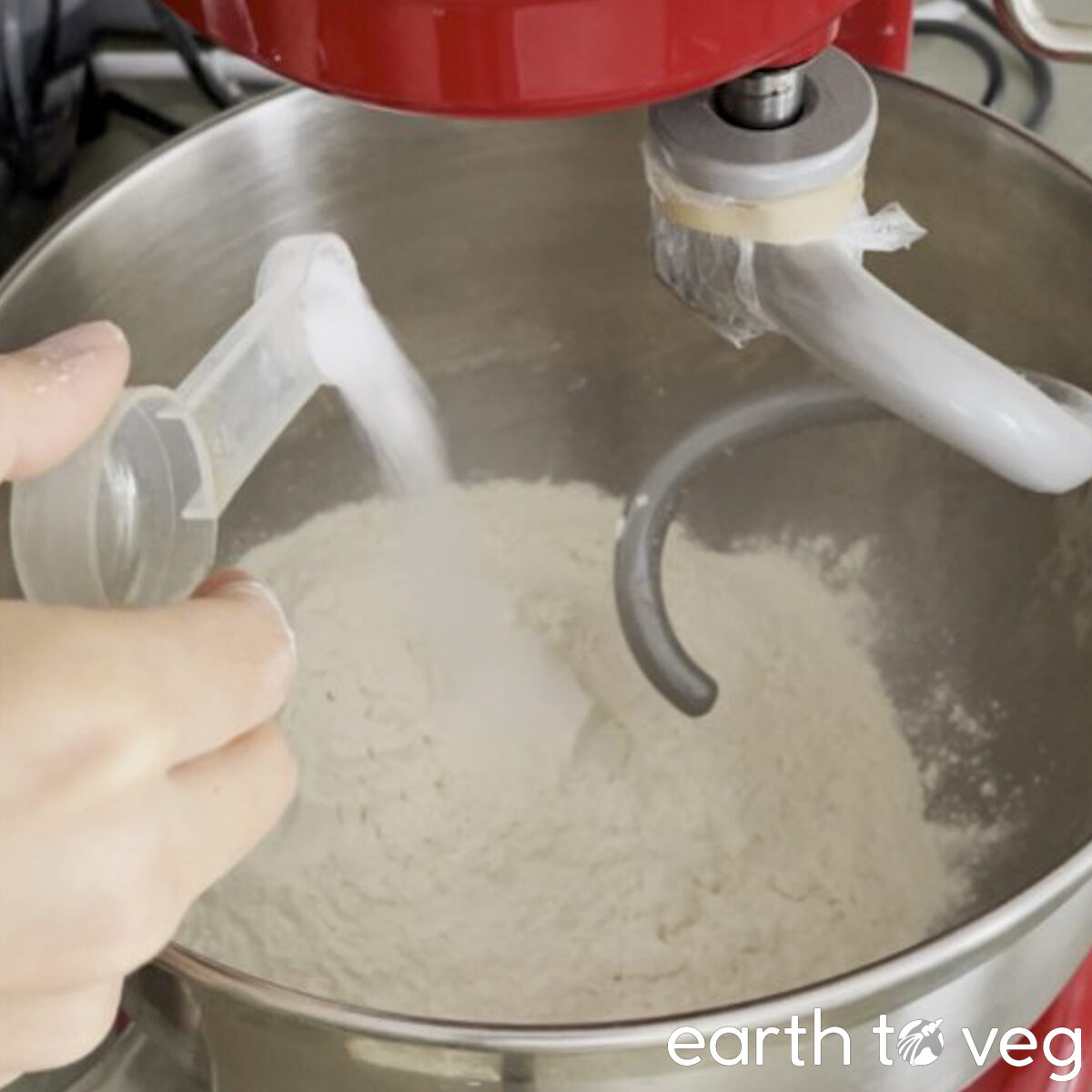
Step 2: Add salt to the flour. Turn the mixer on to the dough-mixing setting (this is Speed 2 on the KitchenAid).
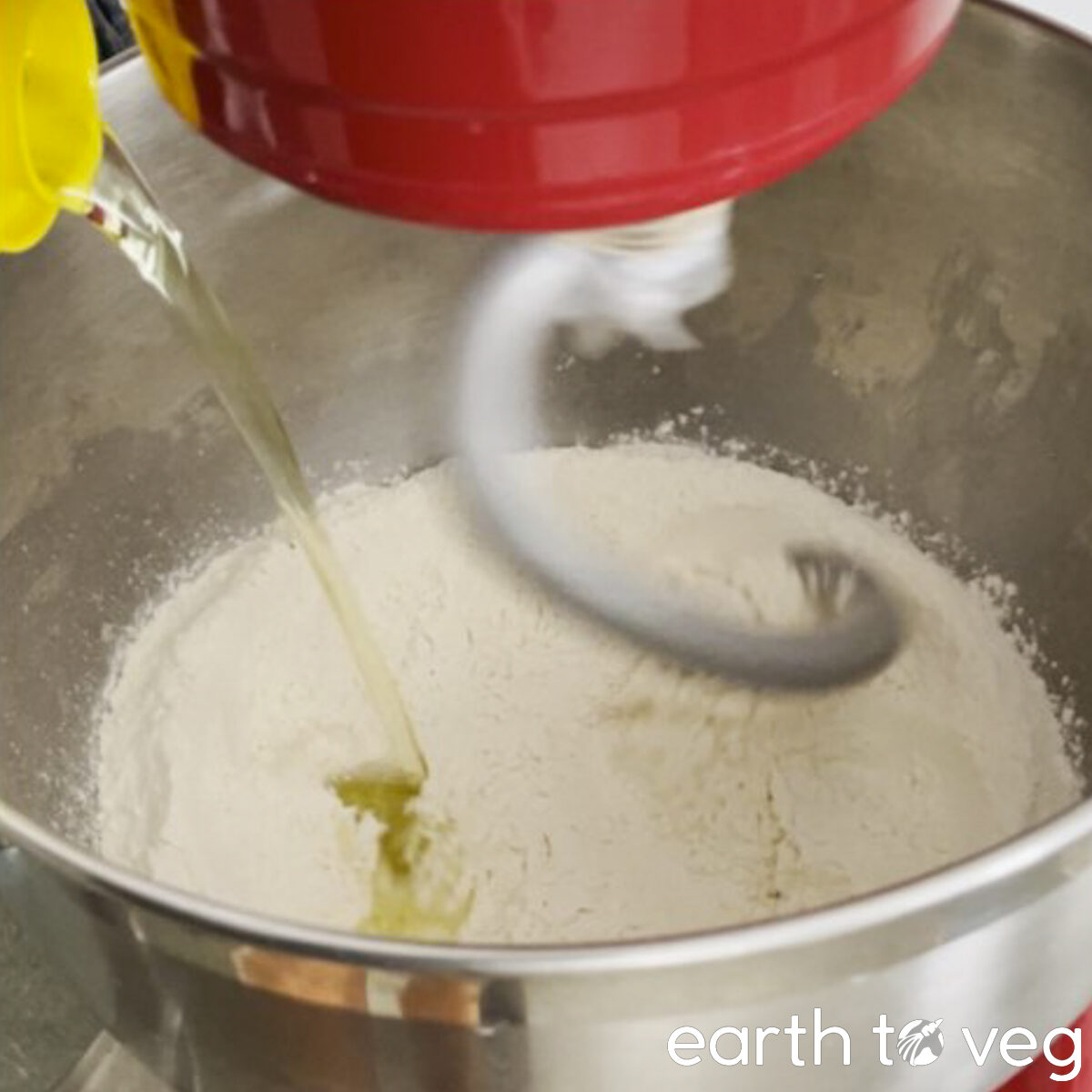
Step 3 (optional): If using oil, pour that in too at this point. Let it get roughly incorporated into the flour.
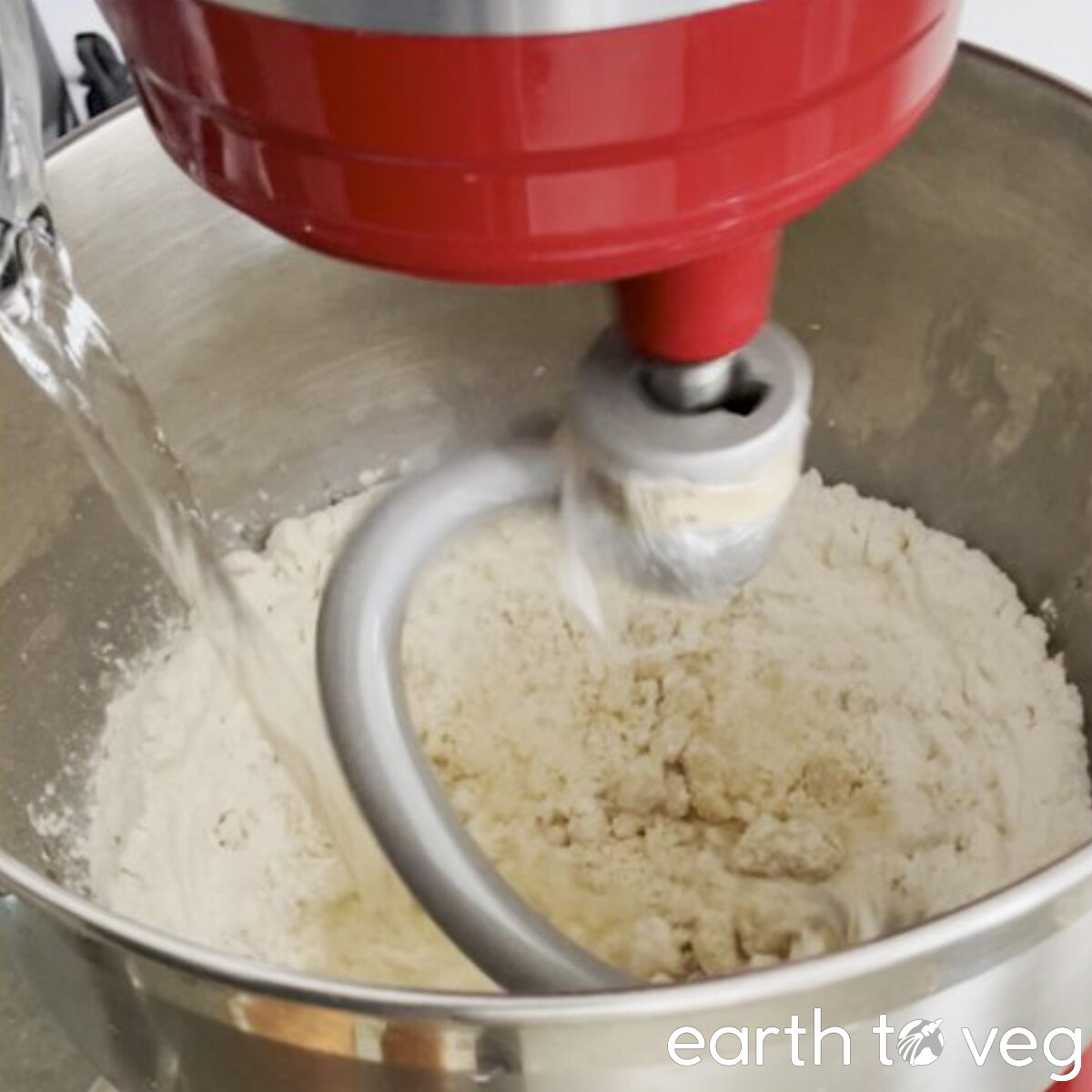
Step 4: Measure out 3/4 cup of the boiling hot water. Carefully pour it into the flour mixture while continuing to run the mixer.
Tip: Be fairly quick with pouring in the water (but make sure to be careful not to splash it back on yourself). We want to coat all of the flour in hot water before it cools down.
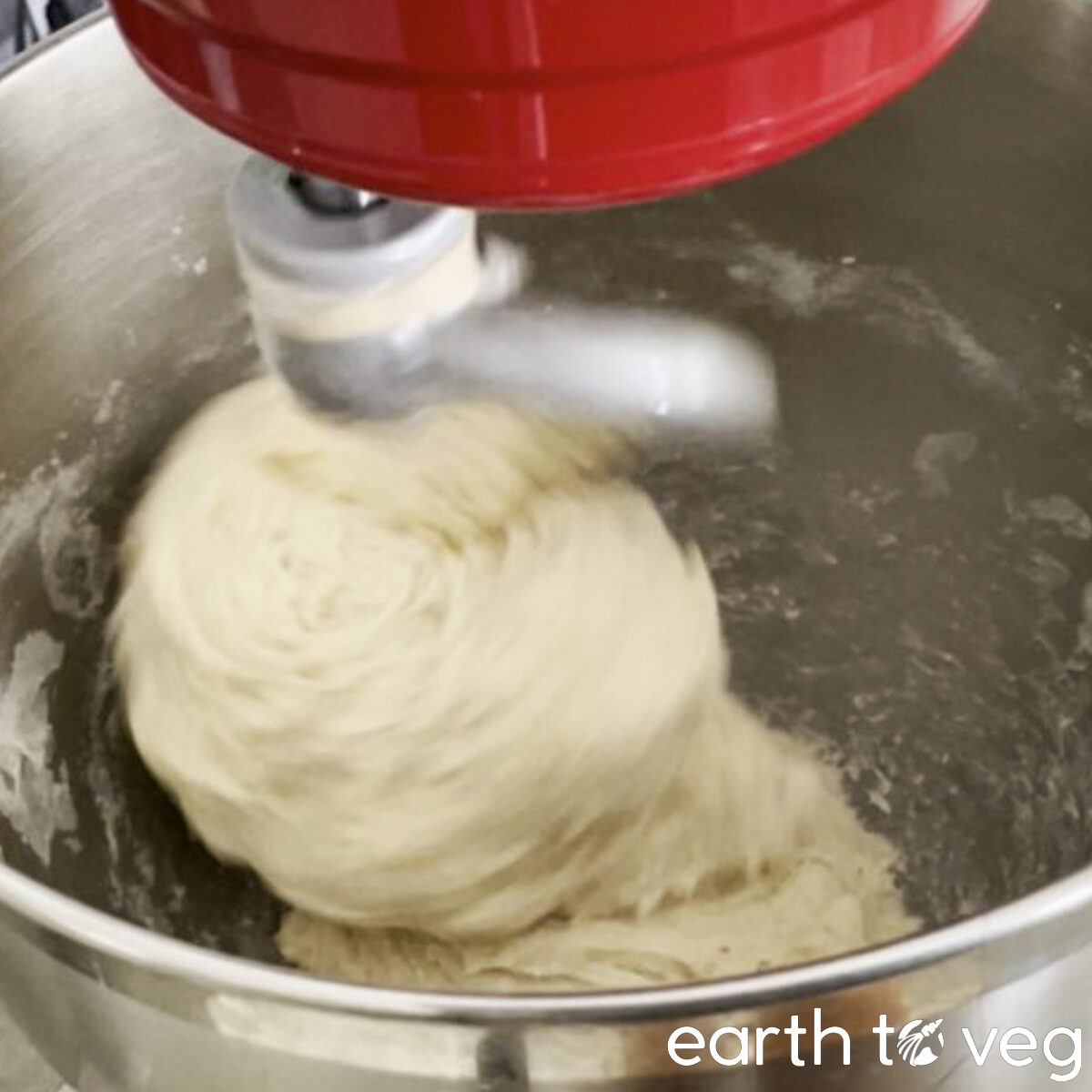
Step 5: Once all the water is added, continue mixing for a minute or two, bringing all ingredients together into a shaggy ball. The dough should be cool enough to touch after a couple of minutes. Knead dough for a few minutes, until it’s a tacky, somewhat smooth ball. This should take no more than five minutes either by hand or in the stand mixer.
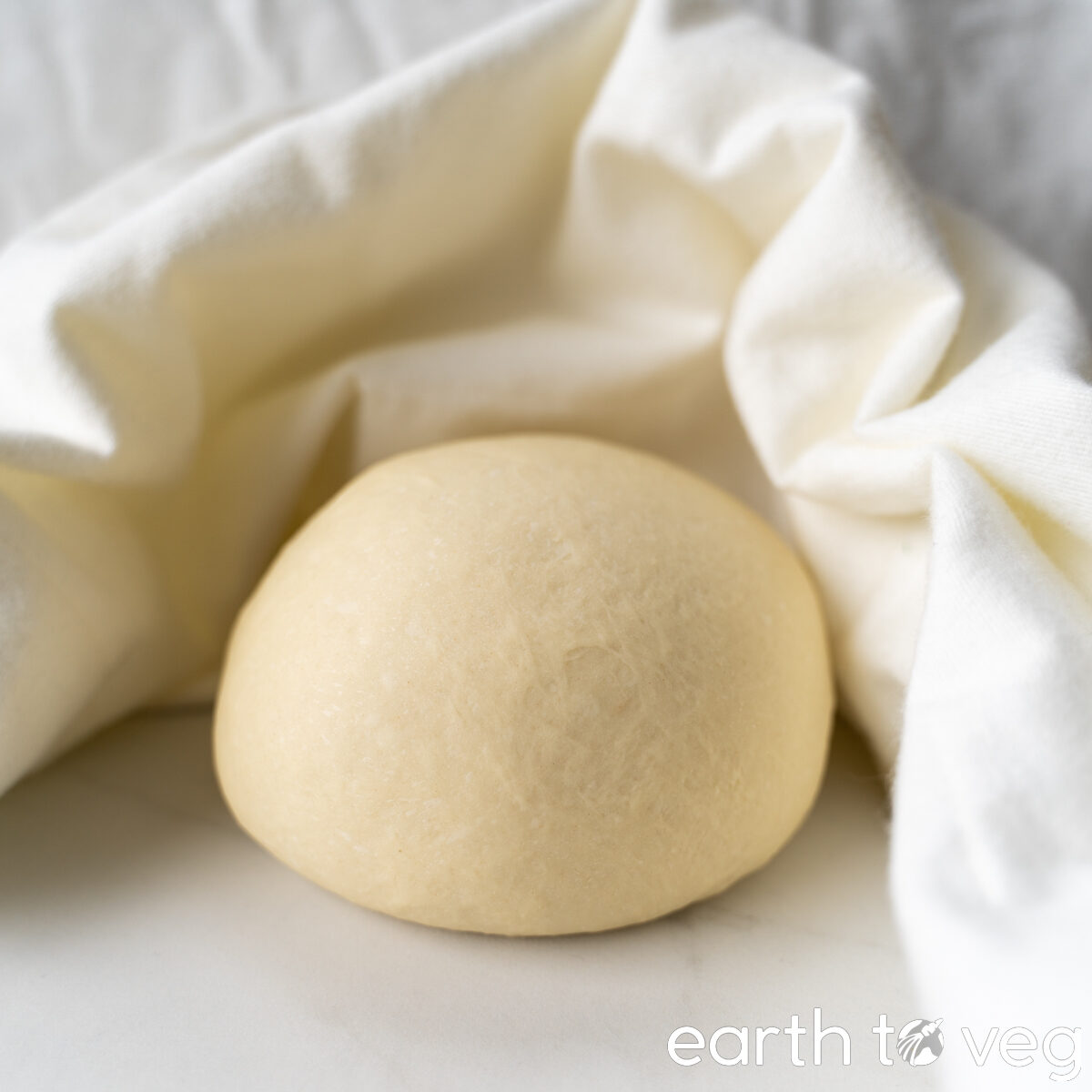
Step 6: Now cover the dough and let it rest for at least 30 minutes, for the dough to relax. This ensures that the dough is super soft and pliable when we handle it. You’re ready to proceed to whatever recipe you intend to use your hot water dough for!
Note: You do not need the surface to look satiny-smooth, like you would for bread dough. As long as it’s uniform, and there are no un-incorporated streaks of flour, you’re fine.
Make Ahead & Storage Tips
Hot water dough can be made up to a week ahead of time. Cover it with cling film (it won’t expand, so wrap it up tightly) and store in the fridge. I like to make double or triple batches of the stuff so that I can take pieces from it throughout the week to roll out on demand. Who doesn’t love a midweek scallion pancake fresh off the griddle?
This dough can also be frozen, but it will be sticky and more difficult to work with once defrosted. Dust with more flour as needed to prevent sticking.
Dough Variations
Here are a few ways you can change up the basic recipe:
- Use whole wheat flour: You can substitute whole wheat flour or durum atta flour in place of the all purpose flour. This type of whole wheat dough is ideal for South Asian chapati (aka roti) and poli (aka holidge). It’s also great for making whole wheat tortillas.
- Add spices or herbs: If you want to go a bit further than plain salt in your dough, try adding some spices or herbs for a different flavour. For example, I learned from my mom to add a small amount of ground fennel to my scallion pancakes which really complements their flavour. Now, instead of smearing it onto the pancake during lamination, I simply add the fennel powder while I’m kneading up the dough.
- Use blended up vegetables instead of water: Blend up a small amount of colourful veg (spinach, red bell pepper, carrot, and purple cabbage are all good choices) with water. Bring the mixture to a boil in a saucepan, then measure out the appropriate amount and add it to your flour and salt. This adds colour and a bit of veggie flavour to your dough.
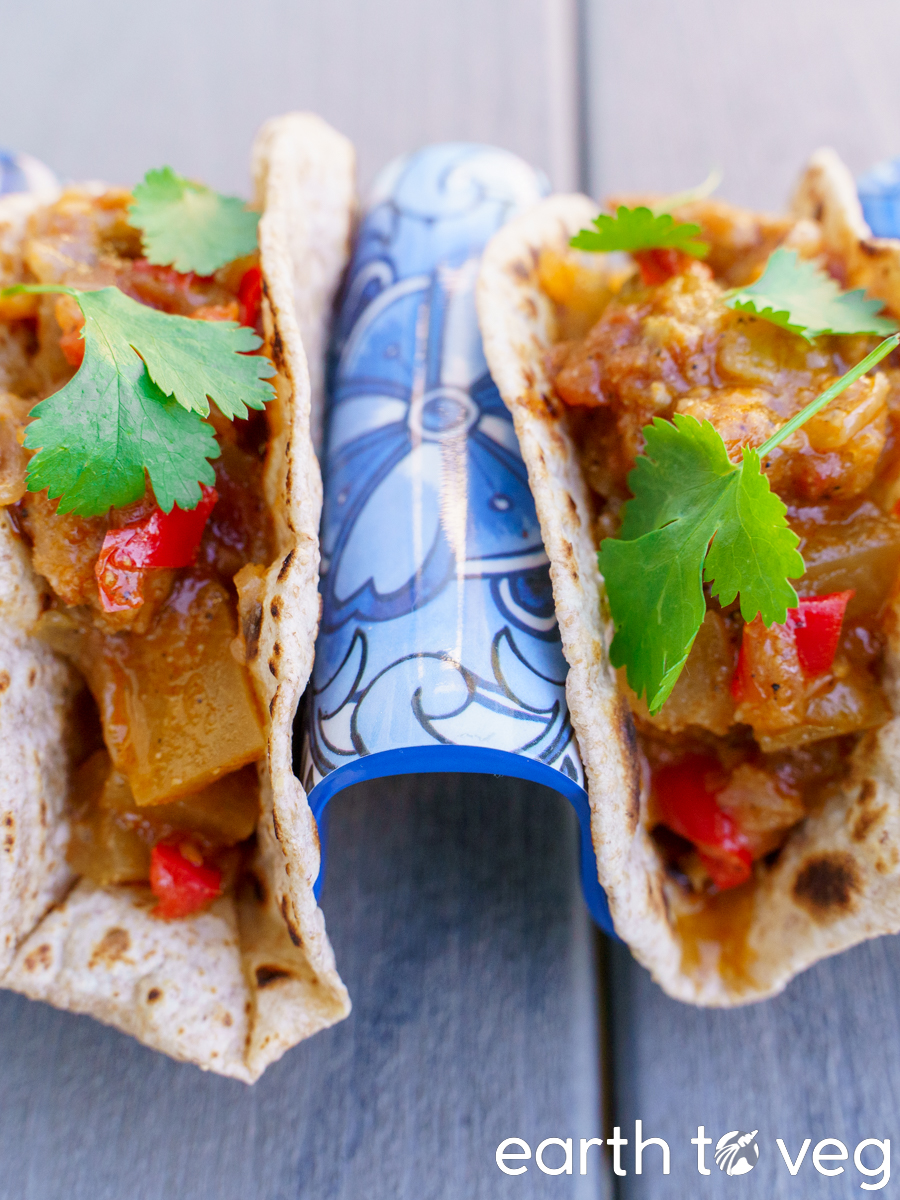
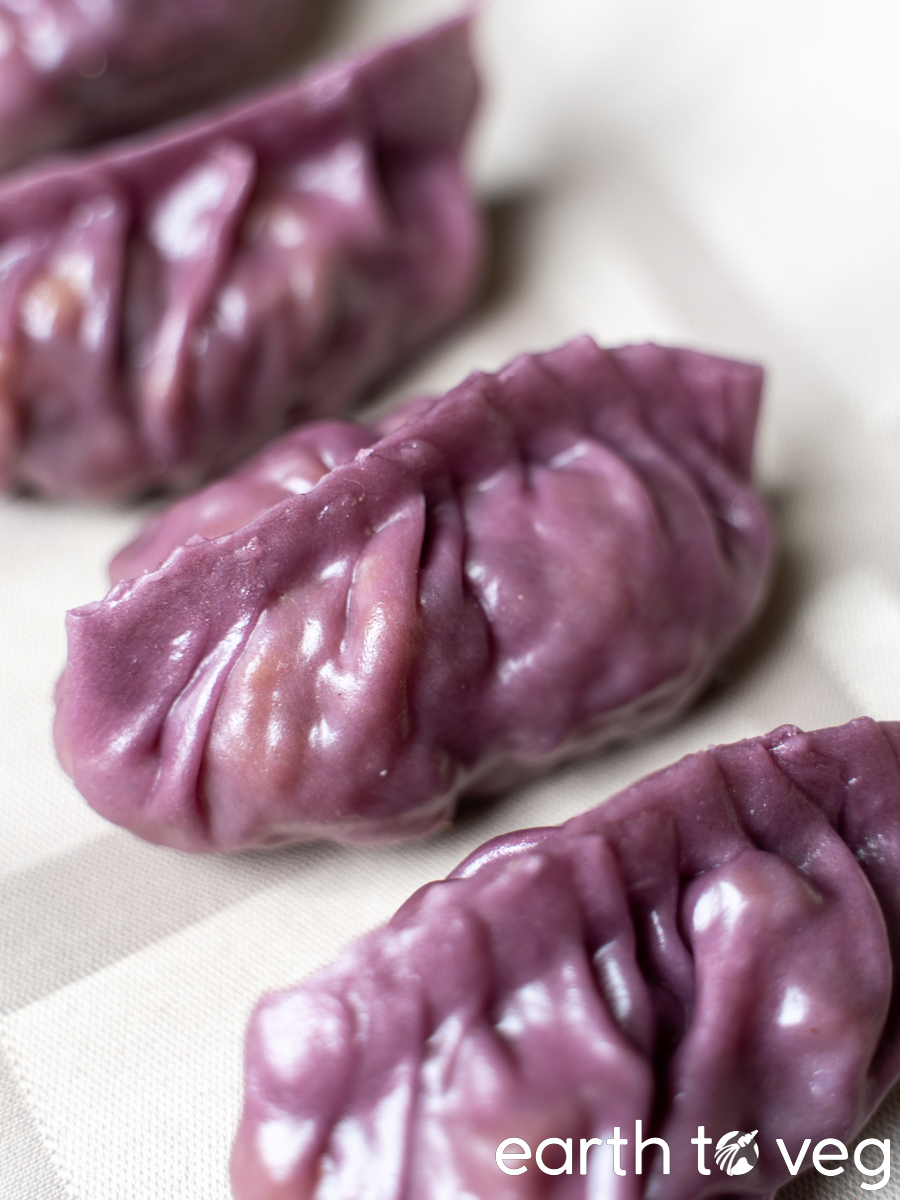
If you made this recipe with a flavour variation, please leave a comment. I would love to hear about it!
Recipe Card
Did you make this recipe? Please consider leaving a rating below to let me know how you liked it.
You can also take a picture and tag me on Instagram @earthtoveg, I will shout you out in my Stories!
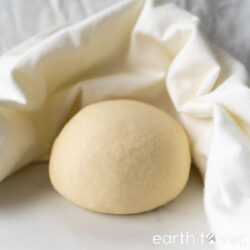
Hot Water Dough (for dumplings and more)
Use Imperial/Metric buttons below to toggle between volume vs weight measurements. I recommend weighing out your ingredients for best results.
Equipment
- Stand mixer with dough hook attachment (can also use a fork and medium mixing bowl if kneading by hand)
Ingredients
Lean Version
- 2 cups all purpose flour
- ½ tsp fine salt or 3/4 tsp kosher salt
- ¾ cup boiling hot water
Enriched Version (see Note 1)
- 2 cups all purpose flour
- ½ tsp fine salt or 3/4 tsp kosher salt
- 2 tbsp vegetable oil
- ¾ cup boiling hot water
Instructions
Stand Mixer Method
- Add flour, salt, and oil (if making enriched version) to the bowl of a stand mixer fitted with either the dough hook or the paddle attachment.
- Turn the mixer on at Speed 2 (or whatever setting is recommended by your mixer for kneading dough). With the motor running, pour in the hot water. Pour slowly and carefully, staying near the edges of the bowl, to avoid getting splashed as the mixer spins around.
- Allow the stand mixer to knead for three minutes, stopping occasionally to scrape up any bits stuck to the bottom or sides of the bowl.
- Cover and let rest for 30 minutes. The dough is now ready to be used.
Manual Method (Mixing by Hand)
- Add flour, salt, and oil (only if making fat version) to a heat-safe mixing bowl.
- Slowly and carefully pour the hot water into the bowl while mixing with a fork or spatula. Continue mixing until a shaggy dough is formed.
- Knead the dough by hand for a few minutes, until the dough is fairly smooth. (Unlike bread dough, it does not need to be a super satiny smooth texture.)
- Cover and let rest for 30 minutes. The dough is now ready to be used.
Notes
- Not sure whether to make the lean version or enriched version of this dough? See the Oil Is Optional section for a discussion on when to use oil, and when to skip it. If you’re following a recipe on my website, I’ll always specify which version to use.
- Nutritional facts are calculated for the version of this recipe made without oil.

Great
Thank you, a very informative and detailed explainer for hot water dough. Much appreciated !!!
You’re very welcome Paul!
How do I make Matzo Balls with this? I can’t find a recipe for it anywhere.
Awesome post, really appreciated the breakdown, the clarity in the instructions (without any fluffy information). Will definitely be using this as my go-to dough recipe for all my unleavened flat bread needs!!
Thank you for the kind words, Sierra! I would love to know what you make with this dough.
This was a really informative post! Looking forward to your dumpling recipes!
I still want to test my dumpling filling a few more times, then it will be perfect! Glad you found the information helpful.
Hi, I don’t normally leave comments on food websites, but I genuinely love your content, and the style feels cosy and homey yet smart and ambitious. Also, I made this dough a week ago, when staying at my parent’s cottage house, the filing, though (and I imagine it could surprise you) was mashed potatoes with fried onion, seasoned with salt and pepper, in Russian cuisine most people call them “vareniki”, but I prefer calling them dumplings as the word “vareniki” derives from another word “varenie” which means jam because the used to make sweet dumplings with all kind of berries and jams before, so the world for calling even savoury dumplings with various different fillings are still called vareniki in Russia. Vareniki are mostly shaped similar to Chinese dumplings – jiaozi, and they are mainly boiled in water just for a few minutes because the filling is either already precooked or doesn’t have to be cooked all the way through at all. Today I am making dumplings filled with turkey, seasoned with different spices, although I know you aim for vegan recipes, and I am vegetarian myself, mostly plant-based (no eggs, no meat, no fish), I prepare food for my family, who are not happy to transfer to plant-based diet yet. I make vegan food for them from time to time too. Anyways, thank you very much for the love and knowledge you put into your work, please keep up.
Thank you so much for such a kind and interesting comment! I saw your post on Instagram and those dumplings look gorgeous, you’re obviously a pro at folding them. Where I’m from there’s a lot more Ukrainian presence so I’m more familiar with perogies than vareniki, though it seems like the filling is the same (mashed potatoes, and I’ve also had a sweet version w/ saskatoon berries), just the folding technique is different? Anyway I’m really happy you found my hot water dough recipe useful. I hope your fam enjoyed the turkey dumplings too!!
The both words “varenje” (jam) and “vareniki” (dumplings) are derived from the verb “varit” – to cook. There is no connotation of “jam” in the word “variniki”.